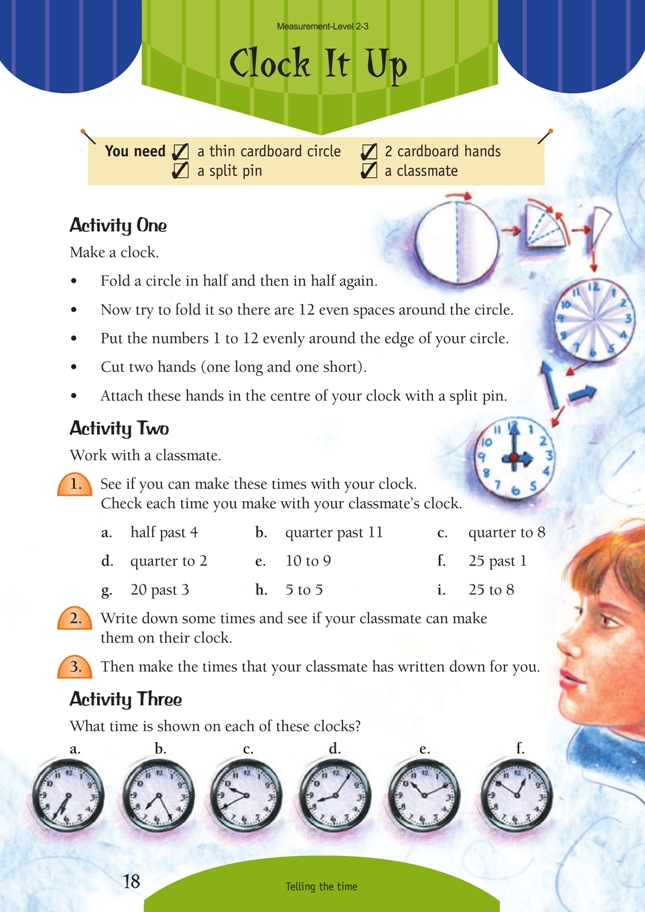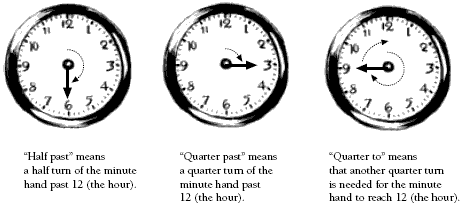This is a level 2 measurement strand activity from the Figure It Out series.
A PDF of the student activity is included.
Click on the image to enlarge it. Click again to close. Download PDF (183 KB)
tell the time on analogue clocks
calculator
Activity One
Following the instructions to fold a circle into 12 equal parts is valuable in that it reinforces the need for the numbers on a clock to be evenly spaced. Some card is difficult to flatten after folding, so students may need to stick the circle to firm card in order to make a clock they can use. A hole punch helps to make holes for the split pin in both the hands and the clock face.
Activity Two
This activity illustrates the connection between movement and position in geometry and measurement of time.
Although the clocks the students have made are measured in 5 minute marks, point out that the marks around the clock face of most clocks show a period of 1 minute when measured by the minute hand. Encourage students to count the passage of time as the minute hand rotates, with particular emphasis on the 5 minute count as the minute hand meets each face number, “5 past, 10 past, 15 past, 20 past …” This can be matched to digital time, “1:05, 1:10, 1:15, 1:20 …”,
using digit cards placed on a frame.
Once 30 minutes (half past) is reached, students must learn to count down to the hour, initially by fives. So the count progresses:
“half past 1 (or 1:30), 25 to 2, 20 to 2, quarter to 2 …”
An interesting question is, “Why is ‘15 minutes to’ more commonly called quarter to?” Similarly, students must realise that the hour hand moves over the same marks but its travel to each face number takes place over the period of one hour. Most classroom clocks have setting knobs on the back that can be used to demonstrate the relationship between the passage of the minute and hour hands. Ask questions like “As the big (minute) hand turns all the way around, how far does the small hand travel?”, “What will be the time on this clock 1 hour later?”, and “What about 30 minutes earlier?”.
Answers to Activity
Activity One
Teacher to check
Activity Two
2. – 3. Answers will vary.
Activity Three
a. 25 to 7 or 6:35
b. 25 past 7 or 7:25
c. 20 to 10 or 9:40
d. 5 past 8 or 8:05
e. 10 past 10 or 10:10
f. 10 to 1or 12:50

